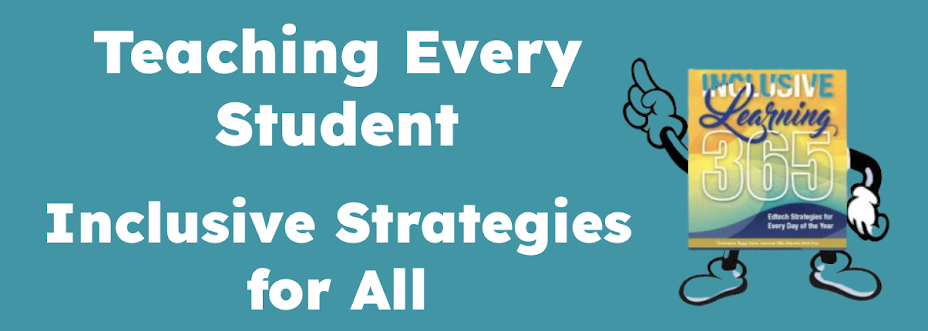We met during her academic support period to see if there were assistive technology solutions to support her learning. She is a bright student with reading disabilities. The first words out of her mouth were, "I don't read." Hmmm. I immediately thought, "Well let me come to your rescue and show you text to speech!" When I showed her how she could access text and then listen using a service such as Bookshare, she told me it wouldn't work for her. She explained she found the voices too annoying which would distract her and cause her to lose focus. Therefore, learning would not occur.
In working with her, I wondered if changing the size of text or using Readability features would be of benefit. I showed her the Reader feature on the iPad since she has one. She immediately reacted with horror, "But we lost the pictures!" It turns out she needs the pictures that accompany textbook or science articles as they help anchor her learning.
What else worked for her? Human voices. Human voiced text. I directed her to four resources which she did feel would be of help - Audible.com for human voiced copyrighted and popular books, Audio books available from the library, Overdrive books available from public libraries and finally Librivox.org, an online resource which offers human voiced, out of copyright books such as those authored by Shakespeare, Dickens and Twain, for download.
Text-to-speech is not the answer for everyone. How do we make decisions which work best for each student?
 Fortunately, there is a new, free tool which can help guide decisions for reading accommodations - the Protocol for Reading Accommodations (PAR) by Denise Decoste and Linda Bastiani-Wilson, available from Don Johnston, Inc. The website describes it as follows:
Fortunately, there is a new, free tool which can help guide decisions for reading accommodations - the Protocol for Reading Accommodations (PAR) by Denise Decoste and Linda Bastiani-Wilson, available from Don Johnston, Inc. The website describes it as follows:PAR provides you with all you need to systematize your procedures for making data-based reading accommodation recommendations for students who are not reading at grade level or have physical disabilities that keep them from utilizing printed texts.
What's Included?Take the guesswork out of reading accommodations and meet the individual, unique needs of your students with reading challenges. Check out PAR to guide your reading accommodation decisions.
Protocol—guides you in collecting data to compare independent reading, reading with a human reader and reading with a text reader
Reading Samples—provides eight reading passages (four narrative, four expository) and vocabulary questions for each grade level, grades 3rd through 10th
Quizzes—contains comprehension quizzes for each reading passage—factual, topic related, inferential and vocabulary
Multiple Formats—reading passages are available in Word and ePUB so that you can use them in Bookstream (Don Johnston’s cloud-based reading distribution system) or within your current text reader

6 comments:
Hi Karen,
When I think of a struggling reader, I think of Text-to-Speech. I'm glad to hear reasons why it's not always the best choice from the "source". Is it wonderful to be able to receive input from the student. What great insight she seems to have about her own learning.
I have received my free copy of PAR and can not wait to take a look at it and see how I can incorporate some strategies in the regular education classroom.
Thanks for sharing.
Nancy,
Yes it was really wonderful to hear how she had developed many effective strategies while recognizing that reading in a traditional manner just didn't work for her.
She plans to major in Marine Biology next year when she goes off to college. She will use the strategies that work for her, I have no doubt.
Thanks for stopping by.
One of the things I like about technology is that it gives us an opportunity to help everyone. Listening and creating.
I shared this post on Facebook. I have appreciated your blog for many years. Thanks for keeping it going.
I appreciate how everyone here is looking at different types of technologies as tools and not as the end all be all for students growth. I have found working in a k-8 building that if a student "doesn't read" they slap whatever technology they have used in the past and apply it to the present student. I think its important to look at the options you have and see what fits the best for the student in question.
Marvelous work.Just wanted to drop a comment and say I am new to your blog and really like what I am reading.
Post a Comment